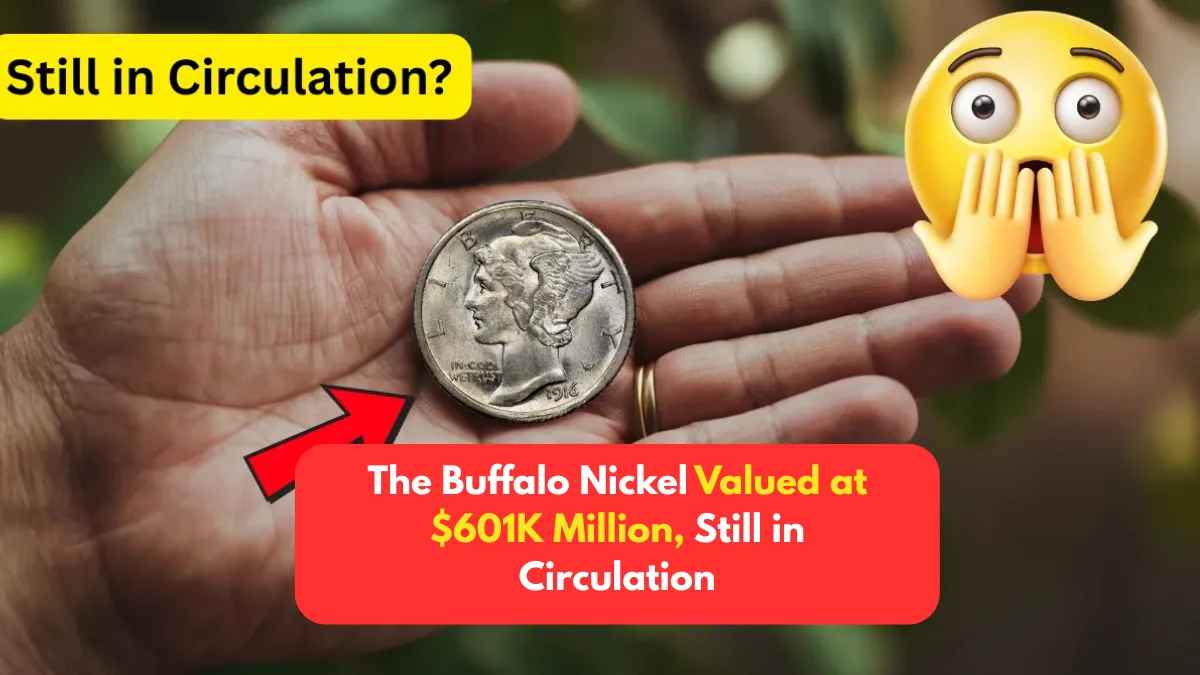The Buffalo Nickel, also known as the Indian Head Nickel, is one of the most iconic and beloved coins in American history. Minted from 1913 to 1938, its rugged design and old-world charm make it a favorite among collectors. But what if one of these nickels, long out of standard circulation, is actually worth a staggering $601 million?
While the number may sound too incredible to be true, let’s explore the facts behind this extraordinary claim, the real value of rare Buffalo Nickels, and how to tell if you might be holding one worth a fortune.
What Is a Buffalo Nickel?
- Minted: 1913–1938
- Obverse (front): Profile of a Native American warrior
- Reverse (back): American bison (often referred to as a buffalo)
- Composition: 75% copper, 25% nickel
These coins were designed by James Earle Fraser to honor the American West and the Native peoples of the U.S.
Where Did the $601 Million Valuation Come From?
To be clear: no single Buffalo Nickel has officially sold for $601 million. That figure is likely myth or hype, possibly due to a misprint or online misinformation.
However, some extremely rare Buffalo Nickels have sold for hundreds of thousands, and in theory, if a one-of-a-kind minting error or a previously undiscovered prototype were found, its value could climb into the tens of millions — though $601 million would likely only be possible under extreme, speculative circumstances (such as a private collector bidding an unprecedented amount).
The Most Valuable Buffalo Nickel: 1913 Liberty Head (Type 1, “Hobbs” Error)
- Known examples: 5
- Estimated value: $3 million to $10 million+
- Story: This rare nickel was a pattern coin, never meant for public circulation. One sold for $4.56 million in a private sale.
So while $601 million is an exaggeration, certain ultra-rare Buffalo Nickels can still make you rich.
Rare Buffalo Nickels to Watch For
| Year | Mint Mark | Description | Value (High Grade) |
|---|---|---|---|
| 1913-S | Type 2 | Scarce first-year issue | $50,000–$100,000+ |
| 1916 | Doubled Die Obverse | Strong doubling on “LIBERTY” and date | $10,000–$200,000+ |
| 1918/7-D | Overdate | A “7” under the “8” in the date | $30,000–$350,000+ |
| 1921-S | Low mintage, rare in mint condition | $25,000–$100,000+ | |
| 1937-D “3-Legged Buffalo” | Error missing front leg of buffalo | $10,000–$100,000+ |
How to Spot a Rare Buffalo Nickel
- Check the date – Earlier years, especially 1913, 1916, and 1918, are key.
- Inspect for errors – Look for doubled dates or missing limbs on the buffalo.
- Look for the mint mark – On the reverse, beneath “FIVE CENTS.”
- No mint mark = Philadelphia
- “D” = Denver
- “S” = San Francisco
- Check the condition – Coins with full detail, sharp strike, and minimal wear are the most valuable.
- Look for “Full Horn” – If the buffalo’s horn is fully visible, it indicates strong detail and higher grade.
What to Do If You Think You Have One
If you find an old Buffalo Nickel and suspect it might be rare:
- Do not clean it – This can destroy its value.
- Use gloves when handling.
- Get it professionally graded – PCGS and NGC are the top grading services.
- Consult an expert – A coin dealer or numismatist can provide guidance.
- Insure it – If it turns out to be extremely valuable.
Is It Really Still in Circulation?
Technically, it’s extremely unlikely. The U.S. stopped minting Buffalo Nickels in 1938, so finding one in modern change would be rare — but not impossible. Some people unknowingly spend them, especially if they inherit old coin jars or collections.
Always check your pocket change — especially if you see a coin with a buffalo on it!
Final Thoughts
While the claim of a Buffalo Nickel worth $601 million is exaggerated, it draws attention to the real, substantial value hidden in old coins. Rare Buffalo Nickels have already sold for hundreds of thousands, and a few are still unaccounted for.
Who knows? That dusty coin in your drawer might be a forgotten treasure — and while it may not be worth $601 million, it could still be worth enough to change your life.
